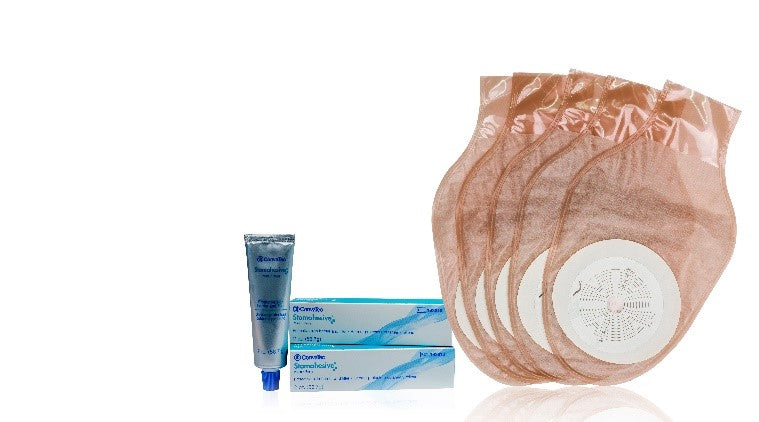Having a stoma comes with its own ups and downs. Many of us have different experiences however I can imagine most of us experience the same problem with having a stoma – the horrible red, itchy and/or sore skin around the stoma (known as Peristomal Skin)
Peristomal skin problems are usually very common however these are not normal, but the good news is that these can be resolved. As the saying goes, prevention is better than the cure, but if you notice any bumps, discolouration, red or purple patches in the peristomal area and you skin is sore, itchy, or painful, then this may be a sign you have a peristomal skin problem.

If you notice any of these symptoms, it is important you contact your GP or stoma nurse as they will be able to pinpoint the cause of the problem to be able to treat it. Usually, the causes are being in contact with moisture, mechanical stress, or an infection, however this can be rare, and it might even be from a completely other cause. If this is the case, you may be referred to a dermatologist for treatment.
Most of the time, treatment can be as simple as changing the appliances/support wear or pouching systems you use to better suit your needs and by reviewing and adapting your stoma care routine. Once the problem has been taken care of, the damaged skin will need some extra protection while it heals. Your stoma nurse may provide and show you how to use stoma powder, barrier film or wound dressing.
Stoma powder is usually applied in a “crusting” technique and the excess powder is dusted off and allowed to dry. This can then be followed using a barrier film.
Contact Problems
The most common cause of peristomal skin is unwanted contact with moisture. This is known as MASD (Moisture-Associated Skin Damage). This happens when the output from your stoma, which is corrosive and irritating to the skin, mixes with moisture which then causes contact dermatitis. If you wear an effective pouch that collects your stoma output, this should not happen as it will help prevent the stoma output from touching the skin. However, if this does happen, then it shows that your stoma pouch is leaking. This tends to be more common with urostomies and ileostomies than with colostomies.

It is normal for your stoma and the skin around it to change over time, especially shortly after your operation. That is why it is very important to visit your stoma care specialist at least once a year to make sure the appliance/support wear you are using fits best to your body.
The best practice is to make sure the central hole (also known as the aperture) of your stoma pouch is the exact size and shape to fit around your stoma. Next, you need to ensure your stoma pouch can stick to a flat surface without leaving gaps for anything to leak through. This can sometimes be difficult as no tummy is perfectly flat, and they tend to change shape throughout our lives. The best solution may be to find a pouch that fits perfectly to your body however there are options to help fill in the gaps, which include filler pastes or gels.


You can also try using washers, rings, or discs as these will help to seal over the narrow gap. Flange extenders are another option to try and these will extend the pouch’s adhesive area and keep it secure.
Other substances such as soap, solvent or adhesive material can also irritate the peristomal skin, especially if you develop an allergy to any of these. If that is the case, you will need to speak to your stoma nurse for alternative options.

Mechanical Problems
Mechanical skin problems (known as Medical-Adhesive Related Skin Injuries – MARSIs) appears when you remove the sticky part of your pouch, which can pull the top layer of the skin, causing damage. Removing a pouch should be painless and any signs of MARSI can show it is being removed too roughly and/or too frequently. Your stoma nurse can show you the best way to remove your pouch gently.
MARSI can also appear when cleaning the peristomal area too roughly. It is best to stick to plain water and not use anything that is too harsh on the skin.
To conclude, peristomal skin problems can be very painful and emotional if left untreated. They can be rare if the stoma area is looked after carefully and properly and you wear the correct appliance/support wear. Remember to never be afraid to ask your GP or stoma nurse if you are concerned about something as they will have the experience and knowledge to solve the problem/issue that may be arising.




Thank you for this.
Leave a comment